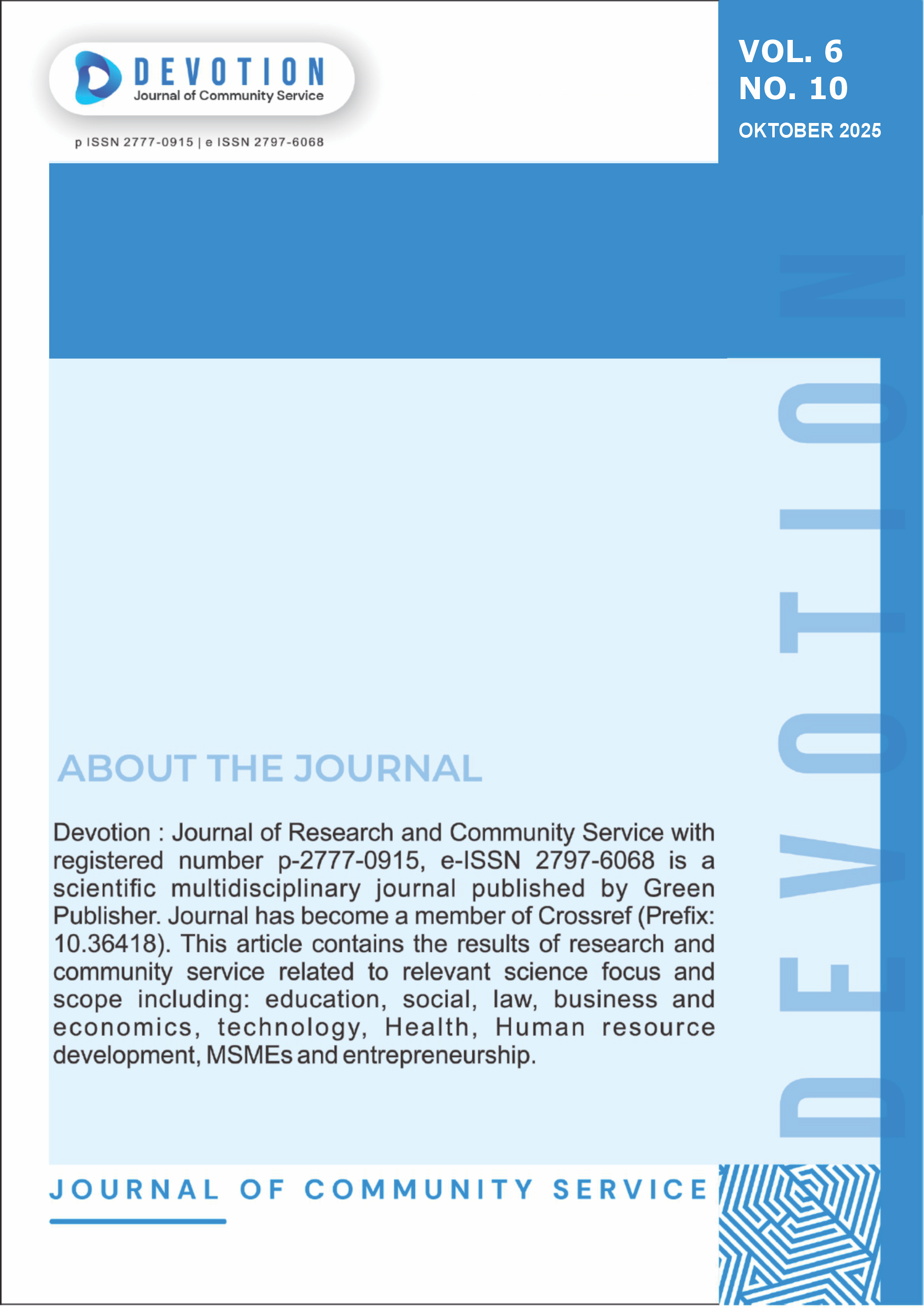Policy Analysis Of Pelagic Thresher Shark (Alopias Pelagicus) Conservation And The Role Of Local Communities In Preservation In Indonesian Waters
DOI:
https://doi.org/10.59188/devotion.v6i10.25543Keywords:
Conservation Area, Local Community, NTT, Policy, Thresher Shark ConservationAbstract
The thresher shark (Alopias pelagicus) is an apex predator that plays an important role in marine ecosystems, but its population continues to decline due to overexploitation and habitat degradation. This study analyzes the thresher shark conservation policy in the Alor Marine Conservation Area, East Nusa Tenggara (NTT), and the role of local communities in supporting the conservation of this species. Data were collected through in-depth interviews, participant observation, and document analysis, then analyzed using qualitative methods. The results show that the conservation policy in the Alor MPA faces challenges in implementation, such as low community participation and limited monitoring resources. This study recommends a community-based approach to improve the effectiveness of thresher shark conservation in a sustainable manner.
Downloads
Published
Issue
Section
License
Copyright (c) 2025 Yohanes Soares, Nur Aini Bunyani, Abdonia W. Finmeta

This work is licensed under a Creative Commons Attribution-ShareAlike 4.0 International License.
Authors who publish with this journal agree to the following terms:
- Authors retain copyright and grant the journal right of first publication with the work simultaneously licensed under a Creative Commons Attribution-ShareAlike 4.0 International. that allows others to share the work with an acknowledgement of the work's authorship and initial publication in this journal.
- Authors are able to enter into separate, additional contractual arrangements for the non-exclusive distribution of the journal's published version of the work (e.g., post it to an institutional repository or publish it in a book), with an acknowledgement of its initial publication in this journal.
- Authors are permitted and encouraged to post their work online (e.g., in institutional repositories or on their website) prior to and during the submission process, as it can lead to productive exchanges, as well as earlier and greater citation of published work.













